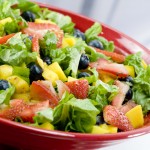Why You Need a Bento Box for Lunch

The bento box concept evolved from this need for food transportation and wholesome packed lunches. A substantive meal could be composed of a portion of rice, with a side of fish, cooked vegetables, or other meats. Bento boxes were made from materials such as bamboo leaves and oak bark, and slowly evolved to the plastic and metal renditions as we know them today. The boxes accommodate a variety of food types, and are quickly becoming a trendy cultural item across Japan, and now in Western culture.
Japanese food culture appeals to the aesthetic senses, incorporating variety, balanced flavor, and visual appeal in almost all dishes. The bento box is no different; designed with efficiency and flexibility in mind, today’s versions still don’t compromise on effectiveness. They key thing to remember about packing a bento box is considering the balance of food components. Since bento food is usually eaten after a period of time, it’s essential to lay out the food in the most effective way.
Traditional bento is composed of a 1:1 ratio of side and rice dishes. Fish, meat, and cooked vegetables are usually set aside in one compartment, and rice filled in the other. Some bento boxes have enough space for small bowls, in which case a cold soup, sushi, or other smaller items can be added for variety.
Picnics are a great way to get started in the bento box trend! Pack a few varieties of food, and enjoy the convenience and simplicity of Japanese-style lunches. Some traditional bento foods include cooked eggs, grilled fish, fish cakes, steamed vegetables, brown or white rice, and a peculiar-but-tasty Japanese apricot named ‘umeboshi.’ This secret to prevent rice from turning bad, is often found on top of a bed of rice. Another common practice is to simply divide up leftovers in an attractive form; remember that visual appeal is just as important as taste!
Look for pre-made bento boxes in your local supermarket; you may find these selections amongst the prepared sushi or ethnic deli. Some Japanese restaurants also offer bento as a takeout item, and it is a great way to try some new combinations and flavors. An interesting facet of Japanese culture are the train stations where bento is often sold. These are named ‘ekiben’ and are as common as a takeout or drive-thru in American culture today. Since trains are a key form of transportation for many, the bento box is the epitome of convenience and nutrition.
Bento boxes have evolved considerably in form, but not in function. With the emphasis on nutritious home cooking, sampling ethnic cuisine, and packing a lunch, the bento box concept is an attractive opportunity in Western culture. Preparing your own bento box is as enjoyable as eating it during a busy day; you can count on nutrition, a balanced meal, and steady energy with a variety of foods. Create something new, and look forward to lunch!







